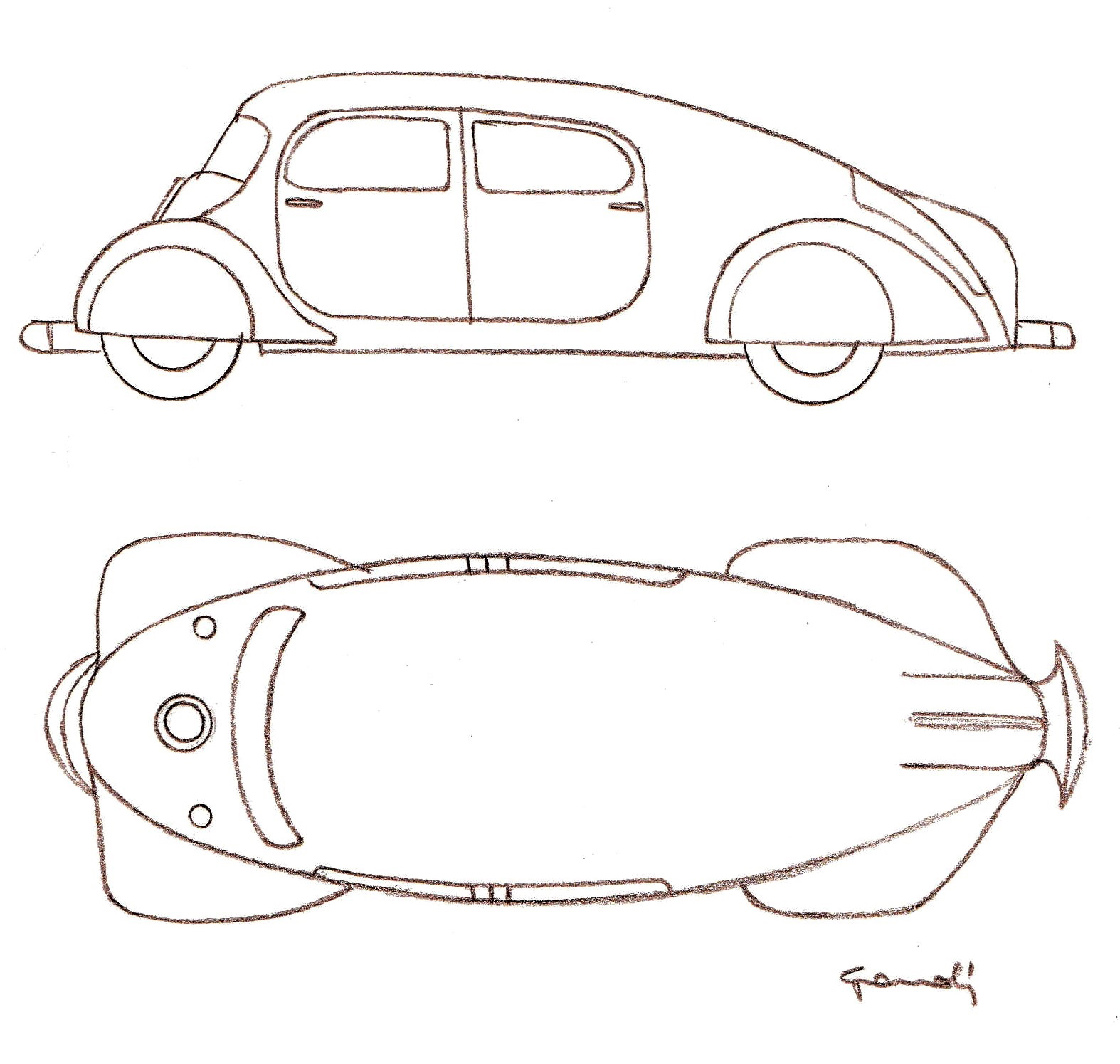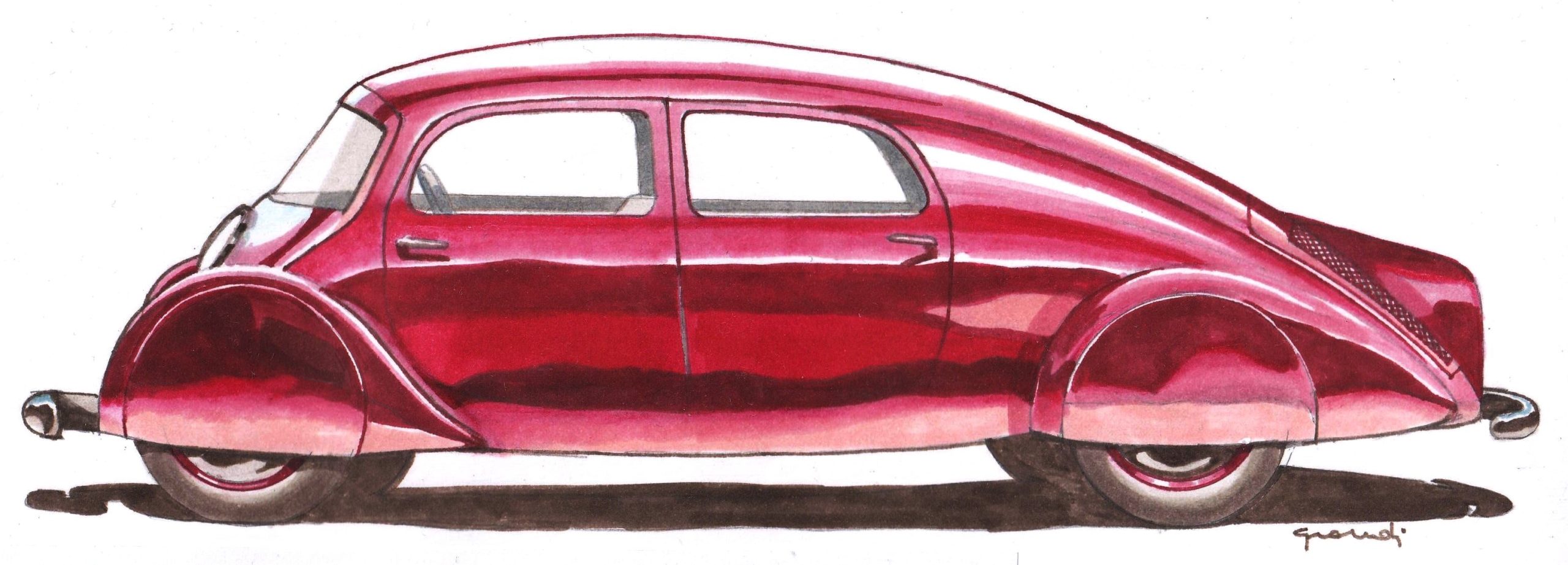Goddess of the Déesse?
With the valuable support of Prof. Massimo Grandi's depth of knowledge and illustrative talent
Photo credit: Some images are taken from the book Asi Service "Quando le disegnava il vento" by Massimo Grandi
In historical research, deduction is allowed provided that there are elements that support it.
When Giuseppe Coda, a well-regarded Italian engineer in the technical and motoring fields with a flair for innovation, came up with the idea of a highly innovative car in 1935, he was working at Citroën in Paris.

The car, protected by a patent, remained on paper but it was an inspiration for many others. Obviously for the Dubonnet Dolphin which we’ll meet next week. But also, it’s possible to say it inspired the car that was, without a shadow of a doubt, the most innovative automobile of the last century: the Citroën DS 19.
Coda left Citroën in 1936, the DS project began in 1938, a very short period of time in the years when the company produced the famous “Traction Avant”.

What might have been the inspiring elements he left behind?
First of all, the concept of a chassis based on a modular platform to which light panels for the bodywork could be applied. The DS proposed this very same solution.
Then the careful management of air flow, with the full length body underpan curved in profile to reduce lift, fully skirted rear fenders and the perfectly tapered connection between the roof and the rear of the car. These are fuel-saving solutions that also increase overall performance, a very important theme for Citroën.

And above all, the highly innovative hydraulic transmission, which inspired the semi-automatic system used in the DS, as well as hydraulic brakes which, at the presentation in 1955, Citroën interpreted with the introduction of Europe’s first mass production car equipped with disc brakes. The four wheel steering designed by Coda was not there, but the innovative force of the DS’s hydropneumatic self-levelling suspension was in the same area of future vision.
Finally an idea that the DS offered in the 21 version, the directional headlights that Coda had predicted with his central headlamp.
Fantasies? Maybe. But certainly fascinating and perhaps even possible.
